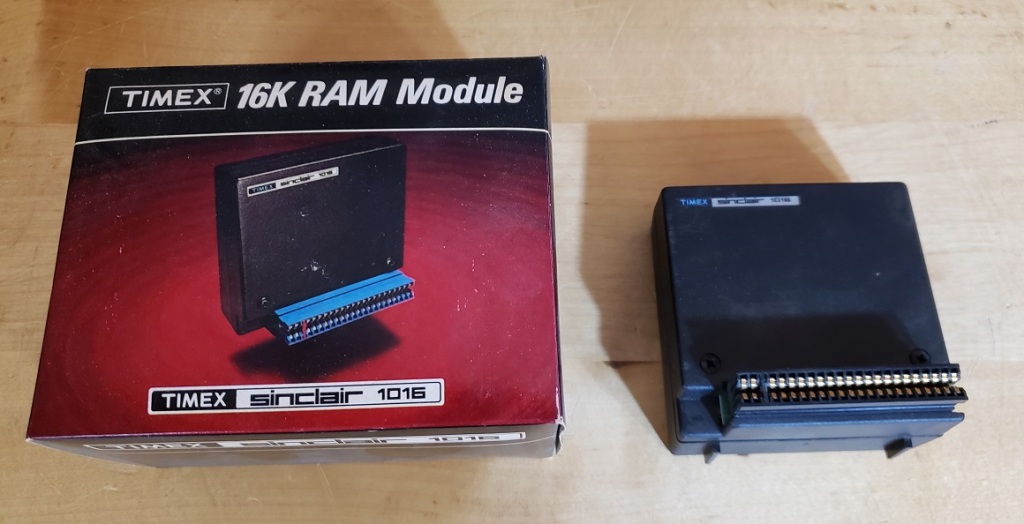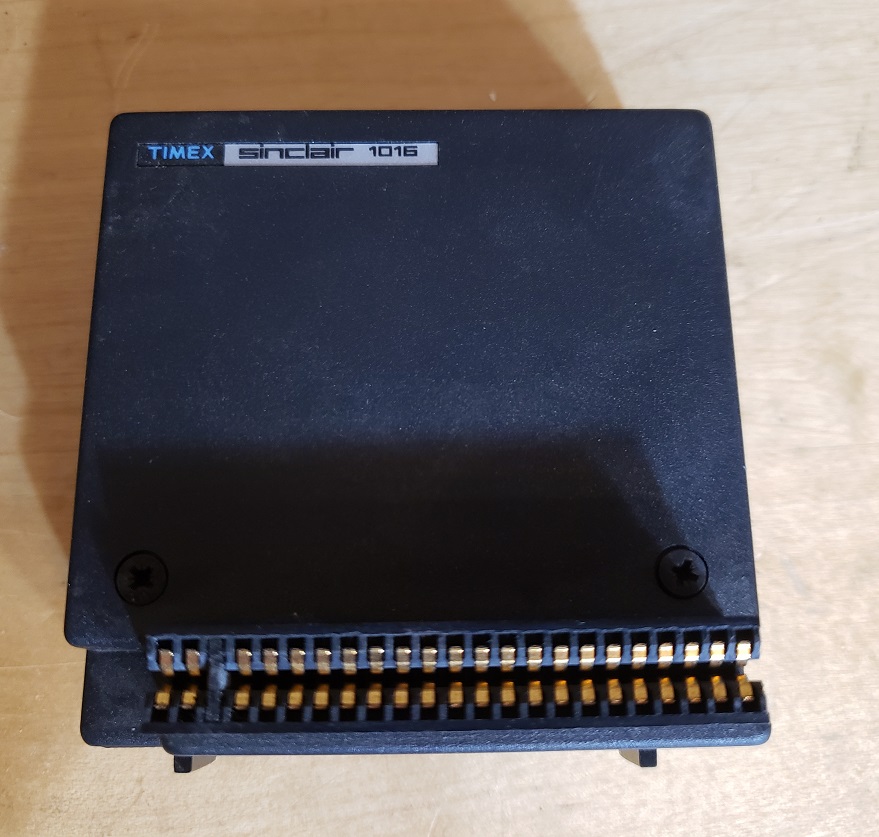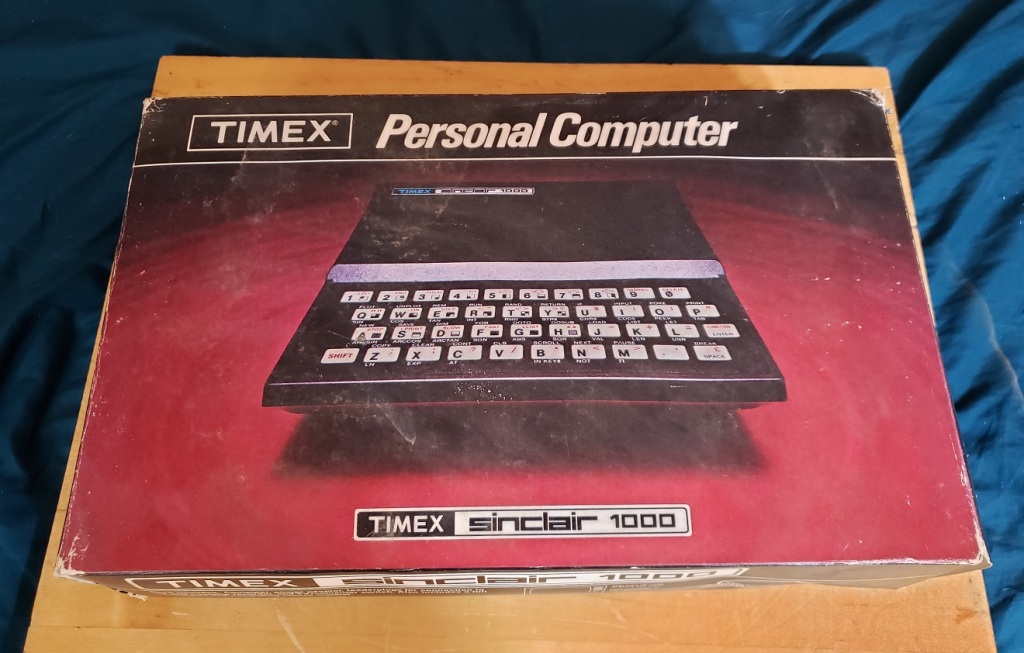
Sinclair is a name well-known in the retro computer scene, well at least in Europe. They are most well known for the Sinclair Spectrum line which was a very influential and widespread home microcomputer in the UK and Europe. Prior to the Spectrum Sinclair had the ZX80 and ZX81.
The Timex Sinclair 1000 released in 1982 is the officially licensed American version of the ZX81. The Timex version is mostly similar to the UK ZX81 with a few exceptions such as having an RF out for NTSC as opposed to PAL, a revised motherboard and it doubles the memory from a measly 1KB to a measly 2 KB.
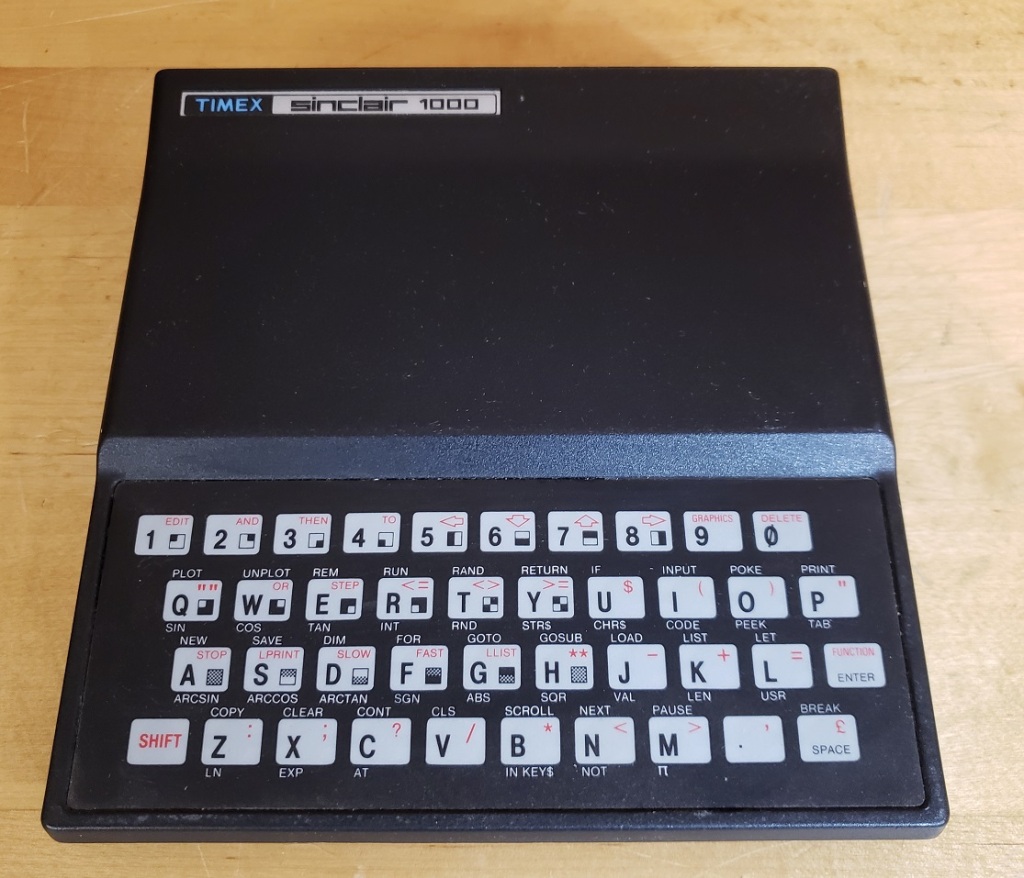
The TS 1000 is very small and lightweight, weighing less than a pound. The keyboard, to be blunt, is terrible. It is a membrane keyboard with most buttons having multiple functions. It’s usable but just feels terrible and is completely useless for any serious typing.
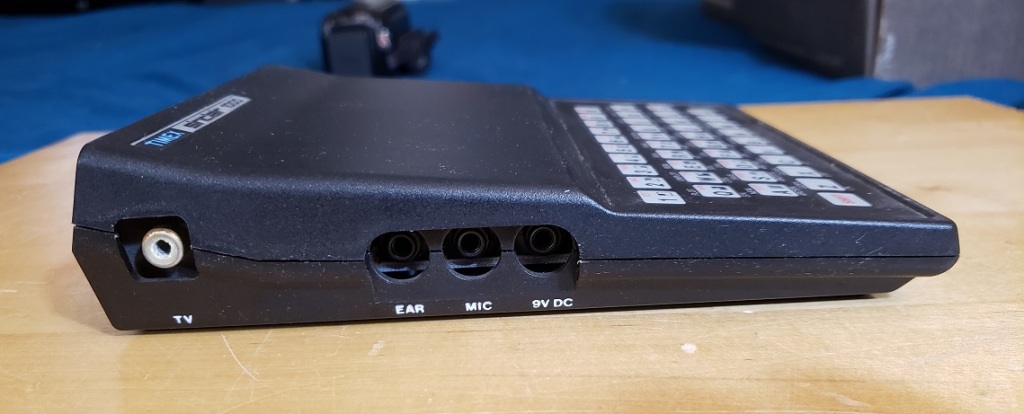
On the left side of the computer are all of the output and input jacks. Near the rear of the system is a large RCA-style video output labeled “TV” this is not composite but is an RF output. You’ll likely need some sort of adaptor piece or RF switch box to connect the RCA-style RF cable to your coaxial TV RF input. Further down the case, we have a series of three 1/8 jack inputs. The first two labeled “ear” and “mic” are for connecting a cassette recorder used for loading programs which all come on cassette tapes. The third jack is the input for the 9v power supply. There is no on/off switch. once plugged in the computer is always on.
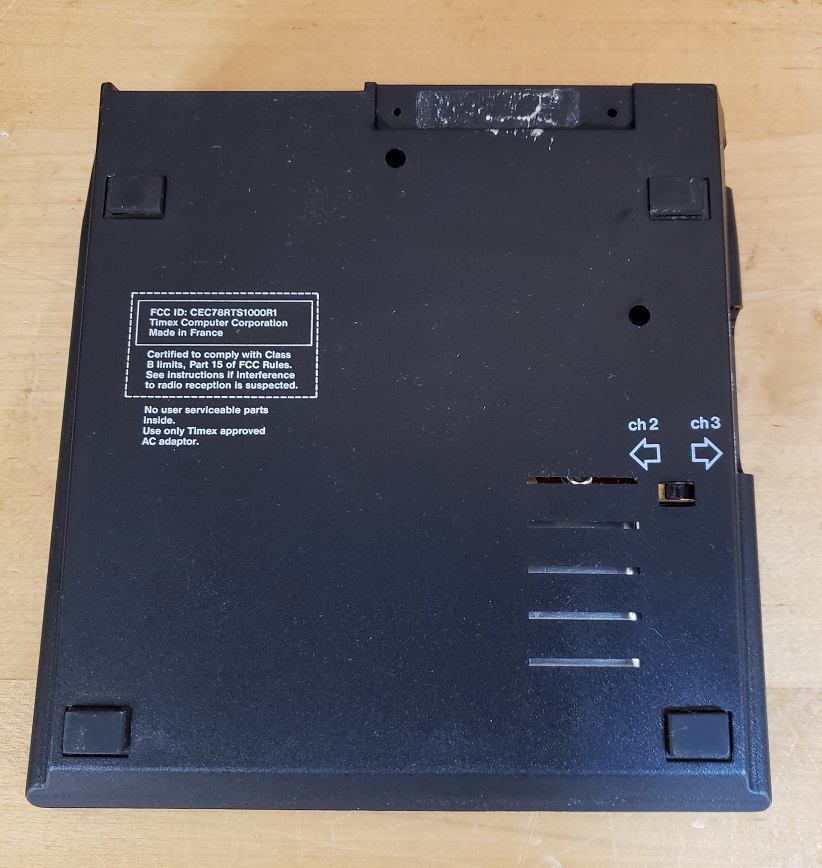
The RF channel select switch is located on the underside of the case and allows selecting between channels 2 and 3.
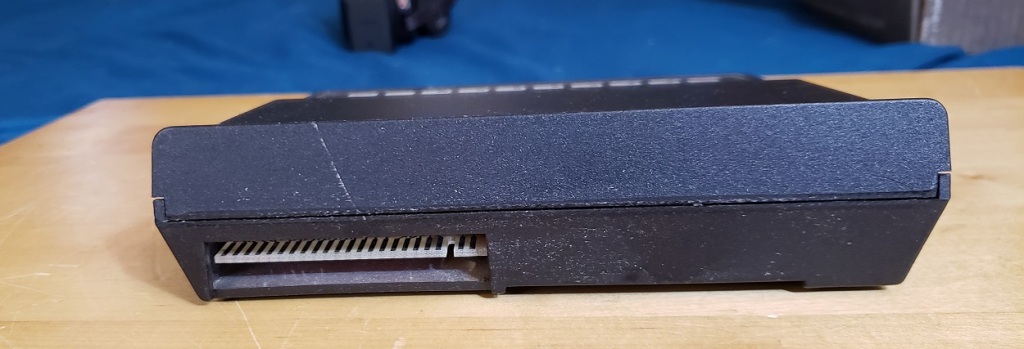
On the rear of the unit, we have a single edge style connector. The most common expansion unit used with this rear port is the 16k memory expansion. The TS 1000 is capable of addressing a total of 64k of memory though I’m unsure if any existing software could take advantage of that much memory.

This is more or less a must-have component as many games require extra memory to run. The connection between the extra memory and the TS 1000 can be finicky and an untimely jostle of the unit while in operation may corrupt your current session.
Opening the TS 1000 isn’t difficult but be careful of the keyboard ribbon cable as it may be fragile and difficult to reinsert into its connector.
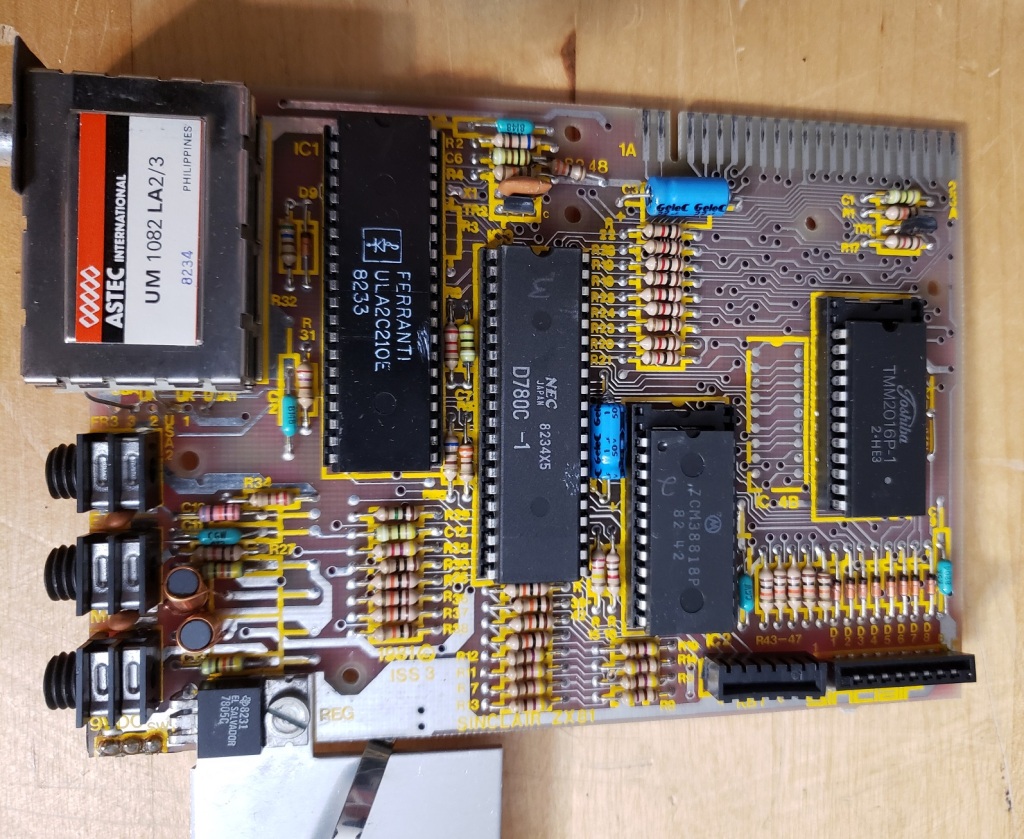
Starting from the far left I believe the first chip is the ULA chip.
The second chip is labeled NEC D780C -1, I was expecting a Zilog Z80 CPU running at 3.25MHz in this socket but the D780C -1 is a pin-compatible replacement. I’m unsure if this CPU is stock or was installed by the former owner as a CPU upgrade, sort of like replacing an Intel 8088 with an NEC V20. I am unsure what if any benefits a D780C would have over a Z80 though.
The third chip from the left is the ROM chip and the last is the system memory. It is nice that all these chips are socketed, at least on my revision. In the event of any particular chip going bad, this should make replacement quite a bit easier.

You could program your own simple games into the TS 1000 and in fact, many programmers got their start on this little machine. Commercial software however came on cassette tapes and mostly required 16k of RAM to run. this required a separate cassette recorder in order to load up the games. I used a Panasonic model and got good results loading games.
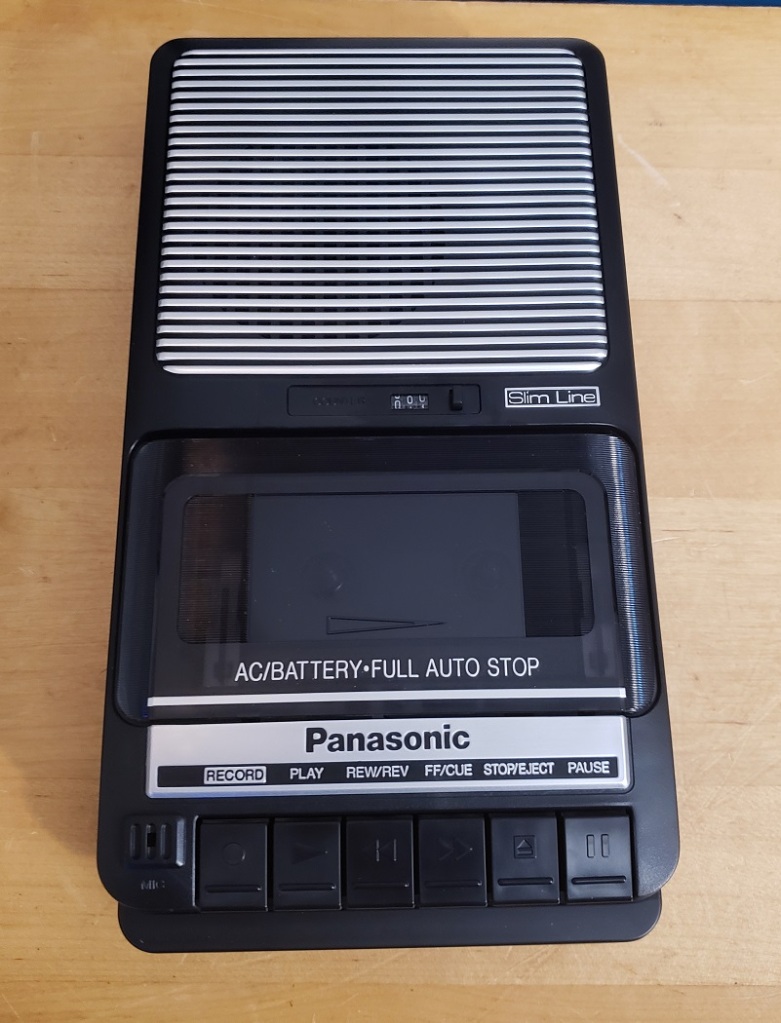
I did find some games just require the “ear” jack to be hooked up and not the mic and most games seem to want your volume control on the recorder to be about mid-way.
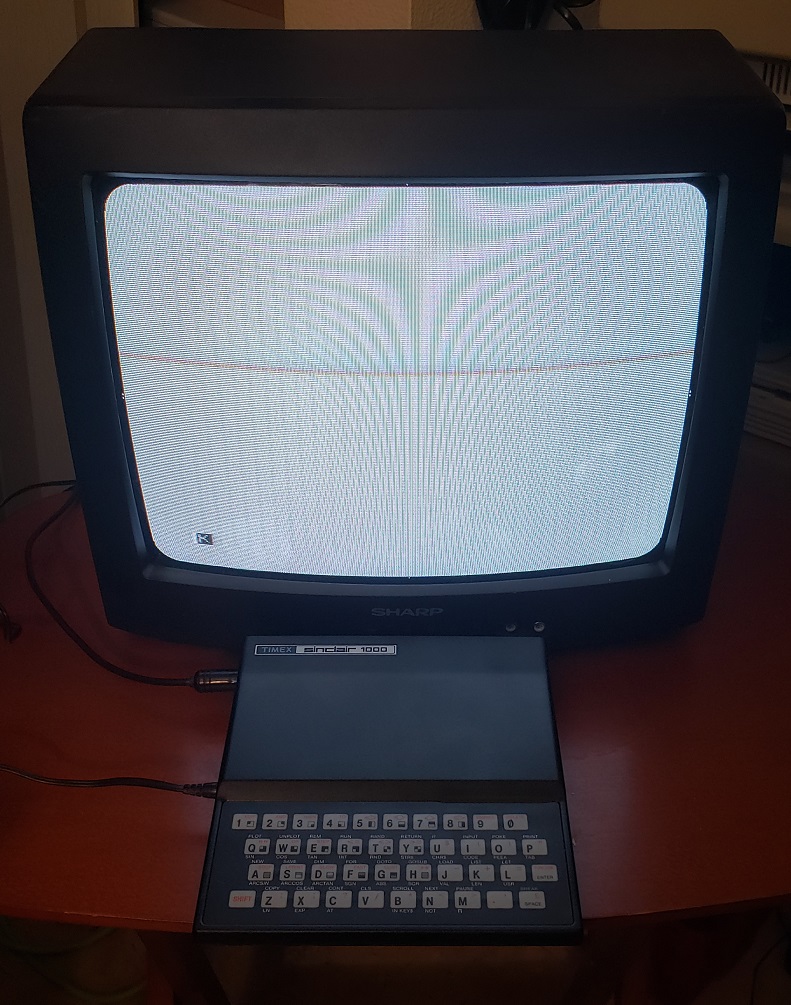
Funny enough, with all my CRT monitors I actually lacked anything smaller that had an RF input. Luckily I was able to source this nice late 90s Sharp TV set with composite and RF inputs. It’s also worth noting at this point that the TS 1000 only will display in black and white and has no sound capabilities.
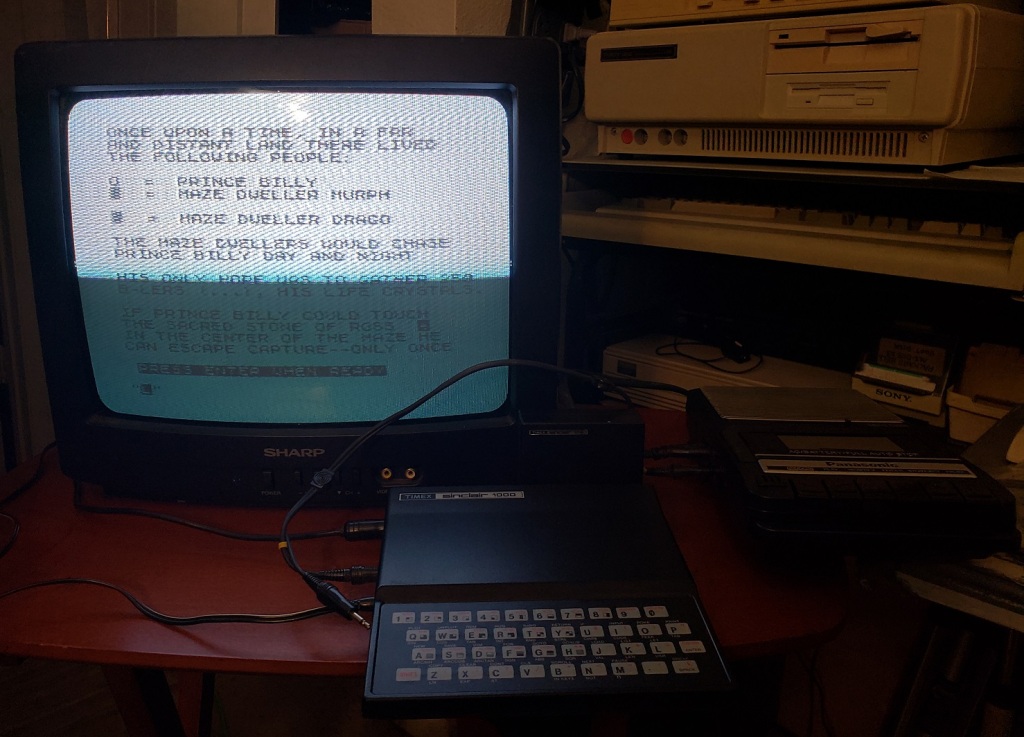
The Timex Sinclair 1000, along with the Z80 and Z81 were influential microcomputers. They were relatively affordable and simple allowing many people to own a computer which otherwise may not have. It also seems many programmers first cut their teeth on programming on a Timex Sinclair 1000 or the like. As a serious retro computer in 2023, it’s really more of a novelty to own one, though prices are low enough to certainly pick one up if only for the collection. It is fun to learn some basic programming and if you’re willing to put up with the terrible membrane keyboard there are plenty of books or online instructions for making simple fun games but unless you have nostalgia for this micro I doubt you’ll spend much serious time with it. There are a few great games like 3D Monster Maze but if you’re looking for anything more complex or on the scale of something like Wizardry look elsewhere.
